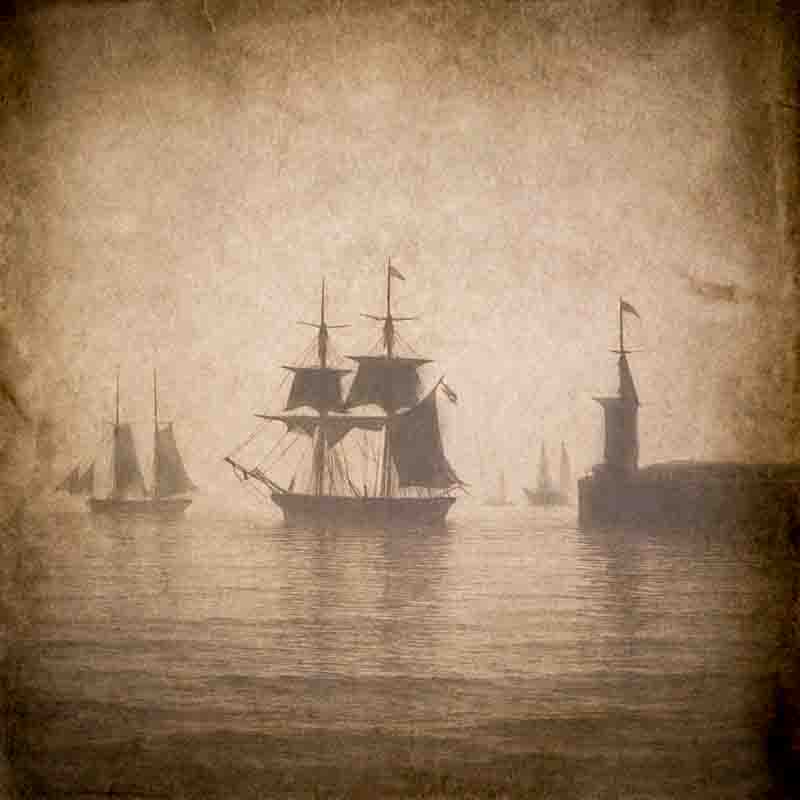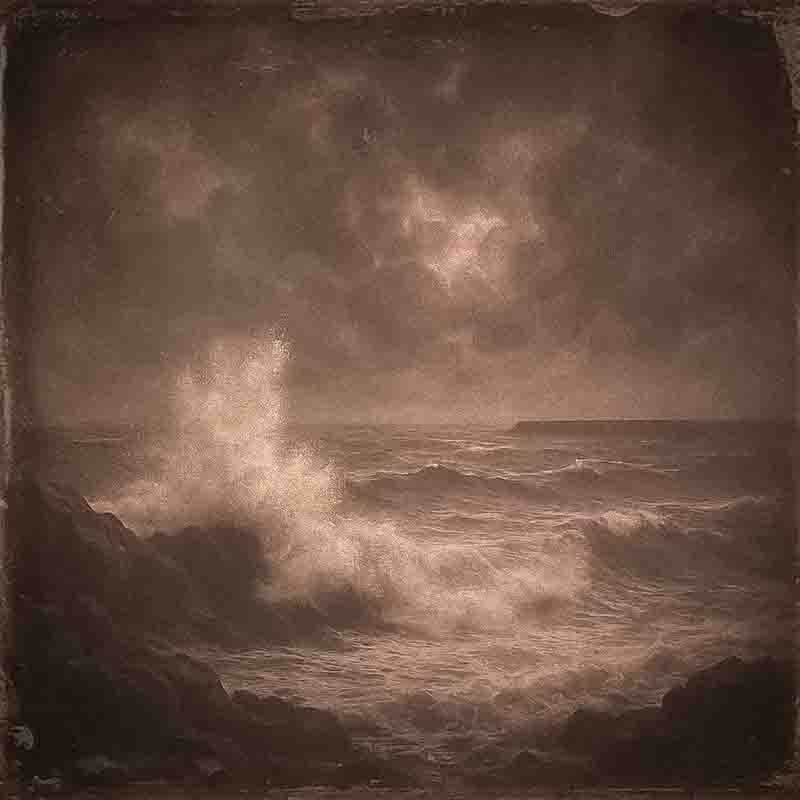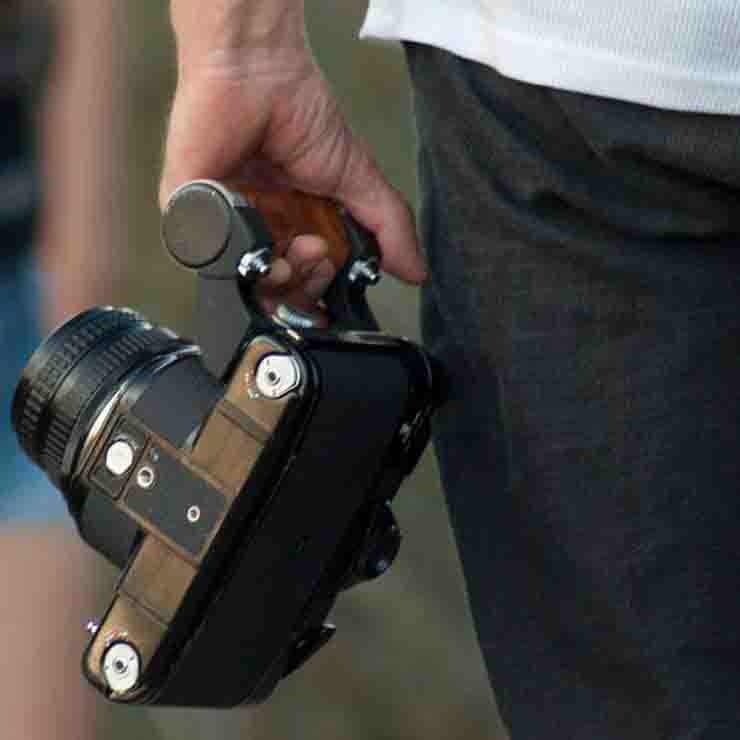 Seascapes and Cloud Studies
Seascapes and Cloud Studies
Le Gray combination printing was particularly effective in his marine photographs, where the sky and sea required different exposure levels.
Originally trained as a painter at the École des Beaux-Arts, Le Gray transitioned into photography during a time of rapid experimentation and technical change.
His contributions helped move photography beyond scientific curiosity and into the realm of visual expression and documentation.
While the Daguerreotype dominated early photography, Le Gray recognized its limitations.
He further refined the calotype by developing the waxed-paper negative process, significantly improving transparency and sharpness.
Among Le Gray's most recognized images are his seascapes, including The Great Wave, Sète and Brig Upon the Water.
These photographs were celebrated for their composition and tonal range, qualities that were rare in the 1850s.
His architectural studies and images of the French military also gained attention.
Commissioned by the French government and published under the Mission Héliographique, his photographs served as visual records of national monuments and infrastructure.
Le Gray taught many students and maintained a studio in Paris that became a center for photographic advancement.
He mentored photographers such as Maxime Du Camp and Nadar, who would go on to become important figures in their own right.
His approach blended technical knowledge with a strong sense of composition, influencing both his contemporaries and later practitioners.
Today, Gustave Le Gray is widely acknowledged as a pioneer of photographic expression.
His work bridges the gap between the scientific origins of photography and its evolution into a form of artistic practice.
His influence extends across fine art photography, photojournalism, and the technical refinement of photographic processes.
Le Gray's innovations with waxed-paper negatives, albumen prints, and photographic composition helped define early photographic practice.
12 key facts about Gustave Le Gray
-
Born in 1820 in France: Gustave Le Gray was born on August 30, 1820, in Villiers-le-Bel, near Paris.
-
Trained as a painter: He studied at the École des Beaux-Arts in Paris and was initially trained under the academic painter Paul Delaroche, which influenced his photographic composition.
-
Became a leading figure in early photography: Le Gray was one of the most technically skilled and artistically influential photographers in mid-19th-century France.
-
Improved the waxed-paper negative process: He refined this technique to produce sharper and more detailed photographs, making it a practical alternative to the calotype and wet collodion processes.
-
Pioneered combination printing: He developed a method of using multiple negatives in a single image, especially to capture both the sky and sea accurately in seascapes.
-
Documented French architecture for the state: In 1851, he participated in the Mission Héliographique, a state-sponsored project to photograph historic buildings in France.
-
Known for dramatic seascapes: Le Gray's marine photographs, such as The Brig and Seascape with Sun Breaking Through Clouds, are widely admired for their technical control and aesthetic balance.
-
Opened a photographic studio in Paris: His studio became a hub for both commercial portraiture and the instruction of younger photographers.
-
Taught and influenced future photographers: Students and collaborators included notable figures such as Nadar and Maxime Du Camp.
-
Left France for Egypt in 1860: After financial problems and debts, Le Gray moved to Cairo, where he continued his photographic work, though with less visibility.
-
Died in obscurity in 1884: Despite his earlier success, Le Gray died in Cairo with little recognition at the time. His contribution was re-evaluated in the 20th century.
-
Regarded as a master of early photography: Today, Le Gray's prints are held in major museum collections, and he is considered one of the most innovative and important photographers of the 19th century.
Le Gray's innovations helped photographers travel more freely and produce higher-quality landscape and architectural photographs without relying on cumbersome darkroom equipment in the field.
Gustave Le Gray: Timeline
Le Gray was born in Villiers-le-Bel, near Paris, and studied painting at the École des Beaux-Arts, where he was influenced by Jean-Auguste-Dominique Ingres.
| Year |
Milestone |
| 1820 |
Born on August 30 in Villiers-le-Bel, France. |
| 1839-1843 |
Studied painting at the École des Beaux-Arts under Paul Delaroche; early exposure to academic art principles. |
| 1843-1846 |
Painted landscapes and portraits; began exploring visual composition and light. |
| 1847 |
Started working with daguerreotypes and calotypes. Transition from painting to photography begins. |
| 1848 |
Transitioned to paper photography; this becomes central to his work. |
| 1850 |
Introduced method of waxing paper before sensitization, improving image sharpness and portability. |
| 1851 |
Commissioned by French government to document architectural monuments. Traveled with Auguste Mestral; photographed Carcassonne, Loire Valley, etc. |
| 1852 |
Photographed Prince-President Louis-Napoléon Bonaparte (later Napoleon III). |
| 1853-1855 |
Taught photography to students like Nadar and Charles Nègre; opened a professional studio in Paris. |
| 1855-1858 |
Created iconic seascapes using combination printing. Works include Brig Upon the Water, The Great Wave, Sète. |
| 1856 |
Established a large, luxurious studio on Boulevard des Capucines in Paris. |
| 1857 |
Reportedly received 50,000 francs in orders for his marine views. |
| 1858 |
Documented French and English fleets in Cherbourg. Combined political relevance with aesthetic ambition. |
| 1860 |
Fled Paris due to financial collapse. Abandoned studio and family. Sailed with Alexandre Dumas, père. |
| 1860-1864 |
Photographed in Palermo during conflict; stranded in Malta; later moved to Beirut and then Cairo. |
| 1864-1884 |
Settled in Cairo. Worked as drawing teacher and ran a small photography shop. Photographed landscapes and daily life in Egypt. |
| 1867 |
Sent photographs to the Paris exhibition, but they received little recognition. |
| 1884 |
Died in Cairo on July 30. Only one surviving child inherited his estate. |
| 1987 |
Retrospective exhibitions re-established his influence on early photography. |
Le Gray is remembered for his technical innovation, artistic vision, and influence on 19th-century photography. His works are held in major museum collections worldwide.
Pioneering Seascape Photography & Artistic Vision
 Gustave Le Gray: French Photographer
Gustave Le Gray: French Photographer
Le Gray's studio produced portraiture, architectural views, and large-format prints, using the albumen print technique, which offered fine detail and consistent tonality.
Master of 19th-Century Photography
In mid-19th-century France, at a time when photography was still struggling to define itself as art or science, Gustave Le Gray emerged with a vision that fused technical rigor and pictorial sensibility.
His seascapes, austere, luminous, and quietly radical, did not merely document the world; they altered how it could be seen.
From Canvas to Camera: Gustave Le Gray's Artistic Journey
Born in 1820 near Paris, Gustave Le Gray trained as a painter under Paul Delaroche, a respected academic artist.
That formal education, rooted in classical composition and the chiaroscuro traditions of oil painting, would later inform Le Gray's photographic eye.
Yet it was not the brush, but the camera that offered him the most profound means of expression.
Le Gray's Unique Vision
By the early 1850s, Le Gray had transitioned from canvas to collodion.
He became a leading figure in the Société Héliographique, one of the first photographic organizations in France.
His technical achievements were substantial: he improved upon the waxed-paper negative process, enabling sharper detail and greater tonal range.
But it was his work with seascapes, particularly his innovative use of combination printing, that redefined the photographic image.
The Great Wave & Brig Upon the Water
At a time when photographic emulsions could not simultaneously expose for sea and sky, Le Gray devised a solution, printing two negatives, one for each, into a single cohesive image.
The results, such as The Great Wave, Sète (1857) and Brig Upon the Water, demonstrated that photography could manipulate light with a painter's precision.
These images were not just feats of technique.
They exhibited mood, composition, and atmosphere, qualities that aligned more closely with the aesthetic goals of fine art than the mechanical neutrality associated with early photographic documentation.
Le Gray's Role in Second Empire Photography
Le Gray was also commissioned to produce photographic reports for Napoleon III, including views of military exercises and architectural monuments.
These works, while more conventional in form, served the expanding bureaucratic interests of the Second Empire.
Yet, they also reflected Le Gray's ability to move between the worlds of art, science, and statecraft, a rare versatility among his contemporaries.
His career, however, was not without interruption.
Financial difficulties forced him to abandon France in 1860.
He sailed to Egypt and eventually settled in Cairo, where he continued to photograph, though his fame diminished.
Few prints from this later period reached European audiences.
He died in relative obscurity in 1884, far from the institutions that once championed him.
Rediscovered Master of 19th-Century Art Photography
In the decades since, Le Gray's work has been reevaluated by curators, historians, and collectors alike.
His photographs are now held in the permanent collections of institutions such as the Getty, the Musée d'Orsay, and the Metropolitan Museum of Art.
Scholars regard him as one of the earliest practitioners to recognize that photography could be both document and interpretation, not merely a record of the visible, but a constructed vision shaped by technical knowledge and aesthetic judgment.
Photography's Artistic Revolution
Photography, in its earliest decades, wrestled with legitimacy.
Was it art? Was it science?
Gustave Le Gray answered not with theory but with pictures.
Pictures in which waves hold their form against clouds that burn with the memory of sunlight.
Pictures in which time seems paused, but never still.
Photography & Artistic Manipulation
Gustave Le Gray's contribution to photography lay not only in what he captured, but in what he taught the medium to become.
His images endure, not because they froze a moment, but because they expanded what moments could look like.
For those who study photography's foundations, his work remains less a curiosity of the past than a point of reference for what photographic seeing might achieve.
Gustave Le Gray's Luminous Photos
Gustave Le Gray's work represents a turning point in the development of photography.
By combining artistic discipline with technical advancement, he helped establish photography as a serious medium for both art and documentation.
His innovations, particularly in negative preparation and printing paved the way for future practitioners and laid the groundwork for photography's broader acceptance in art and society.
Le Gray's images remain important examples of how early photographers solved visual and technical challenges with creativity and precision.
Gustave Le Gray: FAQ
Gustave Le Gray was a French photographer and painter born in 1820. He is known for his technical innovations and artistic contributions to 19th-century photography.
He is best known for improving the waxed-paper negative process and inventing combination printing, especially in seascape photography.
It is a photographic technique where paper is treated with wax before being sensitized. This makes the paper more transparent and improves image sharpness.
Combination printing involves merging two negatives into one print, typically to balance exposures between the sky and the foreground, like the sea.
His best-known works include "The Great Wave Sète", "Brig Upon the Water", and his architectural photographs from the Mission Héliographique.
Yes. He taught many future photographers, including Nadar, Maxime Du Camp, and Olympe Aguado, influencing the development of French photography.
He left France in 1860 due to financial difficulties and legal pressure from creditors. He moved to Egypt, where he continued working as a photographer.
He photographed seascapes, landscapes, architecture, military camps, and portraits of public figures including Emperor Napoleon III.
His work is held in major collections, including the Metropolitan Museum of Art, the Getty Museum, and the Bibliothèque nationale de France.
He died on July 30, 1884, in Cairo, Egypt.


